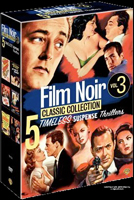 BUY IT AT AMAZON: CLICK HERE!
BUY IT AT AMAZON: CLICK HERE!
STUDIO: Warner
MSRP: $49.98
RATED: Not Rated
In the 1960s, French film writers observed that a sea-change had occurred in American B-pictures made between World War II and the end of the ‘50s. Up to that point, only the ‘A’ productions of the period had been widely seen overseas, and at a politically charged juncture in 20th-century history the Europeans rapidly absorbed fifteen years’ worth of comparatively unfiltered American post-war anxiety, detecting undercurrents of fatalism, pessimism, and irony. Though the movies in question ranged in style and genre from police procedurals to surreal comedies, they were collectively designated Films Noir—dark movies.
The six discs are packed individually in slim-cases, to save space.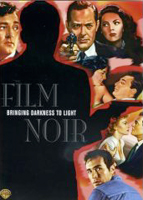 Film Noir: Bringing Darkness to Light (2006)
Film Noir: Bringing Darkness to Light (2006)
RUNNING TIME: 68 min
SPECIAL FEATURE: Five Vintage ‘Crime Doesn’t Pay’ Shorts
The Nutshell
Warner Home Video’s third Noir box leads off with a new documentary, made for TCM and exclusive to the set. Interviewees include contemporary filmmakers Curtis Hanson and Christopher Nolan, writers James Elroy and Frank Miller, plus archival visits from director Edward Dmytryk and cinematographer John Alton.
The Lowdown
The most interesting aspect of this doc is that it allows its participants to disagree and contradict each other on the definition of Film Noir itself. Some point to the 1944 Chandler adaptation Murder My Sweet as a proto-noir film for its visual flair, while others argue that the character of Philip Marlowe, being incorruptible, is fundamentally anti-noir.
Whether by accident or design, most of the flicks in this set are represented and discussed, which is convenient for those fans who don’t already have the first two boxes.
8 out of 10
On to the features. One big technical note: These are all strictly Dolby Mono: if you don’t actually have a home theatre setup make sure your DVD player’s output is set to 2.0 or you won’t hear anything.
The transfers are decent, but the prints all display intermittent damage. It’s a little frustrating, knowing what Warner Home is capable of in the restoration department, but a couple of these films have never before been released on video so that’s something to be thankful for.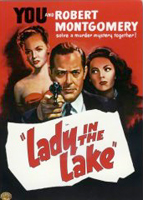 Lady in the Lake (1946)
Lady in the Lake (1946)
RUNNING TIME: 103 min
SPECIAL FEATURES:
• Commentary by Alain Silver and James Ursini
• French Audio
• Theatrical Trailer
The Nutshell
Raymond Chandler’s fourth Marlowe novel is presented exclusively in the first person, via a subjective camera.
The Lowdown
This is more interesting as a technical achievement than as an immersive experience. As the commentary track points out, it’s not enough to see the world through Marlowe’s eyes—we need to know his thoughts as well. Under the circumstances it’s difficult to judge Robert Montgomery’s largely off-screen performance (he also directed), and the onscreen actors cope variably with the challenge of acting directly to a camera that doesn’t move around all that much.
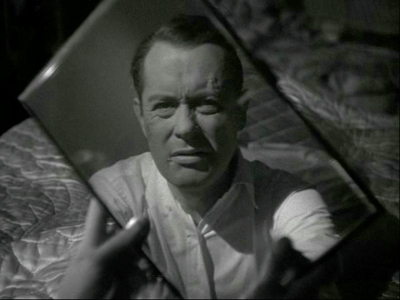
The years have not been kind to Zod.
6 out of 10
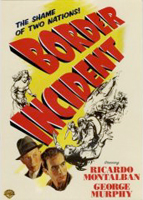 Border Incident (1949)
Border Incident (1949)
RUNNING TIME: 95 min
SPECIAL FEATURES:
• Commentary by Dana Polan
• Theatrical Trailer
The Nutshell
Ricardo Montalban and George Murphy go undercover on a joint U.S./Mexico mission to disrupt illegal immigration.
The Lowdown
Stodgy, deliberate, and dull, at least until a genuinely shocking character death. The film attempts to present an accurate picture of the dangers faced by undocumented laborers, but diplomatically avoids the question of why they would venture across the border at all. Howard da Silva underplays nicely as an exploitive trafficker, and The Narrow Margin’s gravel-voiced Charles McGraw is an effective heavy.
Director Anthony Mann would go on to make several tough, psychologically complex thrillers in the ‘50s and some of his potential edge is discernible here, especially in the climactic action scenes. However, the main reason to watch this is John Alton’s terrific photography.

"When I ask you to give me face, you give me face."
6 out of 10
Now we shift gears. The preceding two films were made at MGM, and despite some rugged moments never quite shook the gloss of respectability. These next three hail from RKO, where then-owner Howard Hughes didn’t care what anyone else thought of his movies. On his watch, and under his obsessive-compulsive hand, they endured tortuous reshoots, rewrites, and recastings— one had its release delayed by two years. The commentators on all three discs are very good at documenting what got filmed when, and by whom.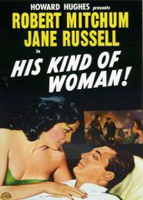 His Kind of Woman (1951)
His Kind of Woman (1951)
RUNNING TIME: 120 min
SPECIAL FEATURE: Commentary by Vivian Sobchack
The Nutshell
Robert Mitchum follows easy money to a Mexican resort, where a gold-digger (Jane Russell), a washed-up actor (Vincent Price), a cardsharp (Jim Backus), an Italian crime boss (Raymond Burr) and employment of an undisclosed nature await.
The Lowdown
This movie is so much dumb fun it’s not fair. I should resent the fact that the story is lopsided and nonsensical, but the cast makes it irrelevant. Mitchum played born losers better than anyone, and Russell is such a perfect match for him it’s a shame they only made one other movie together. The film’s final forty minutes could easily be cut to ten, but that would deprive us of Price’s lunatic performance. I’d say he steals the film, but the fact is that Hughes gave him the keys.
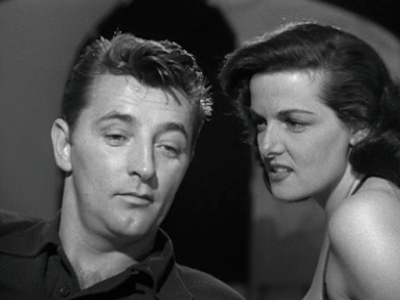
"Got any weed?"
Aviation fans should keep their eyes open for a couple of unusual-looking light planes, courtesy of old man Howard.
9 out of 10
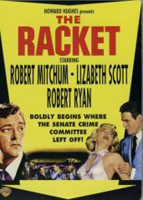 The Racket (1951)
The Racket (1951)
RUNNING TIME: 89 min
SPECIAL FEATURE: Commentary by Eddie Muller (spelled ‘Mueller’ on the case)
The Nutshell
Longtime enemies, police captain Mitchum and gangster Robert Ryan run up against a modern, business-savvy mob operation while the Senate Crime Committee closes in.
The Lowdown
This was adapted from a 1930s stage play, and boy does it show. As with Border Incident, there’s a lot of lip service given to how hard our heroic G-Men are working to fix things, and like Lady in the Lake there’s a distinct absence of morally flexible heroes. Mitchum is totally wrong for the role of a straight-arrow cop, and Ryan’s physical menace is misplaced in a character originally played by Edward G. Robinson. The best work comes from two future TV stars: William Conrad is an archetypal corrupt detective, and Perry Mason’s William Talman makes a strong impression as a rookie officer.
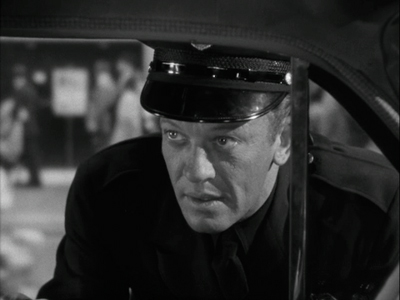
"Welcome to Mister Burger. I got you some meat right here."
6 out of 10
 On Dangerous Ground (1952)
On Dangerous Ground (1952)
RUNNING TIME: 82 min
SPECIAL FEATURES:
• Commentary by Glenn Erickson
• Theatrical Trailer
The Nutshell
Violent big-city cop Robert Ryan gets booted to a remote mountain town, where he finds himself the unlikely voice of reason in a manhunt for a murder suspect.
The Lowdown
We wrap up with the dark jewel of the set. Nicholas Ray had established himself as a talented director at RKO shortly before the Hughes takeover, and he already had two masterpieces under his belt: They Live By Night and In a Lonely Place. Nevertheless, the early ‘50s found him directing uncredited reshoots on other directors’ films (including The Racket); he still managed to get a couple of pictures out under his own name.
Here, Ray is working with the themes that define his best films: alienation, trust, and redemption. Ryan’s deep-lined face barely masks the despair of a man who is tired of being feared and resented for doing his job; whose respect for law has become twisted into hatred for lawbreakers. “Why do you make me do it?” he rages at a terrified suspect, before beating the crap out of him— this is our hero, mind you. Banished to his upstate assignment, he finds that the killer he’s pursuing has a sister (Ida Lupino), a quiet, thoughtful woman who is his opposite in every way except one: her pervasive loneliness.

"Whatcha guys watching? Anchorman again? Eh. I’ll be in my room."
On Dangerous Ground is also distinguished by a powerful music score from the great Bernard Herrmann. It’s almost too strong for such an intimate story: he would later rework elements of it for his large-scale masterpiece, Hitchcock’s North By Northwest.
9 out of 10